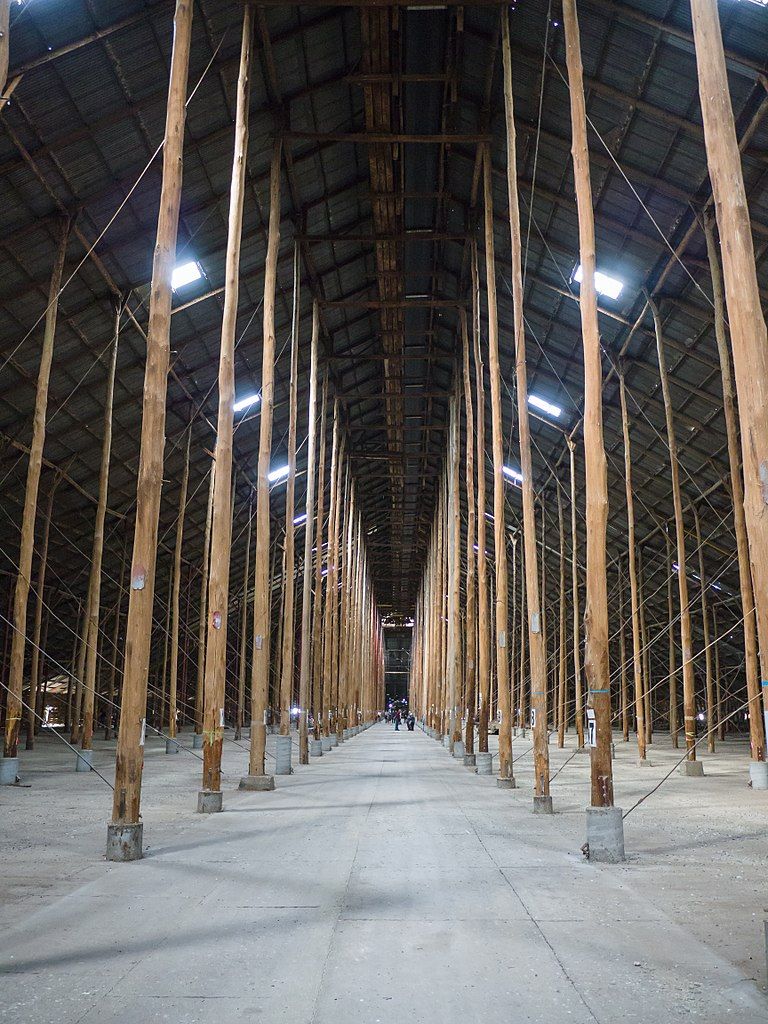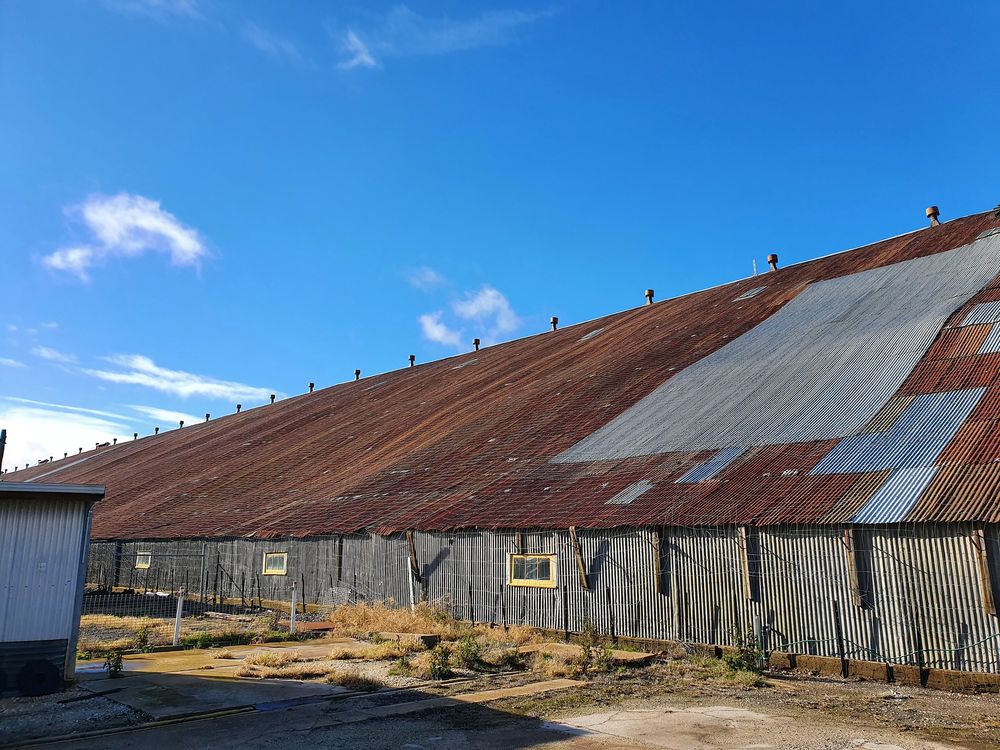In the town of Murtoa, in the Wimmera region of Victoria, Australia, there is a large grain storage facility that looks rather like an enormous cathedral than a grain silo typical throughout the rest the country. Referred to by some as the ‘Cathedral of the Wimmera’ or the ‘Murtoa Stick Shed’, the building is 265 meters long, 60 meters wide and almost 20 meters high.
The Stick Shed was built in the beginning of World War 2 to store grains that could not be exported. It was the first emergency bulk wheat storage shed built in Victoria and is the only remaining shed of this type in Australia.

Photo: Faj2323/Wikimedia
The Australian wheat industry was producing between 150 and 160 million bushels per year in the 1930s. About a 100 million of this was exported, mostly to Great Britain and Western Europe that was soon plunged into war. By 1939, it became apparent that wheat exports could not continue and it would be necessary to store and keep the upcoming harvests for the duration of the war.
In 1939-40, Australia saw an exceptionally good harvest leading to increased grain stockpiling and a shortage of storage facilities. This prompted the Australian Wheat Board to design and build the first large bulk storages in Western Australia. They were referred to as ‘bulkheads’ originally, then commonly known as Emergency Wheat Storage Sheds.
Twenty-two emergency stores were built—18 in Western Australia and four in Victoria. Due to its location at a key transport hub for the Victorian wheat industry, Murtoa was chosen as one of the sites.

Photo: denisbin/Flickr
The Murtoa Stick Shed was built over four months between September 1941 and January 1942. A steel shortage meant the shed was built largely from readily available timber, some 560 (56 rows of 10) unmilled mountain ash poles erected into the auger-dug footings in the ground. Concrete was manually poured around the footings. To reduce the use of nails, galvanised hoop-iron was used in most of its structural joints. Over this timber structure, 150 tons of iron roof was put covering an area 16,000 square meter. The roof angle was sloped to reflect the same angle a pile of wheat forms naturally. The shed had a capacity to hold 3.5 million bushels or about 92,500 tonnes of wheat.
Bulk deliveries of grain were distributed through the Stick Shed via a system of mechanical elevators and conveyors, including a central conveyor running high along the center of the shed. Elevators transported wheat from delivery hoppers up to ridge level where it was distributed by conveyor along the length of the shed, creating a huge single mound of grain. A conveyor at ground level took wheat back to the elevator for transport elsewhere.
The Murtoa Stick Shed continued to hold grain until it was phased out 1989, due to increased cost of maintenance.
The building was listed on the Australian National Heritage List in 2014, recognizing its place "as a significant part of Australia’s history associated with Australia’s wheat industry and the impact of World War Two on the home front.”

Photo: Culture Victoria

Photo: Adrian Tritschler/Flickr

Photo: Adrian Tritschler/Flickr

Photo: denisbin/Flickr












Comments
Post a Comment